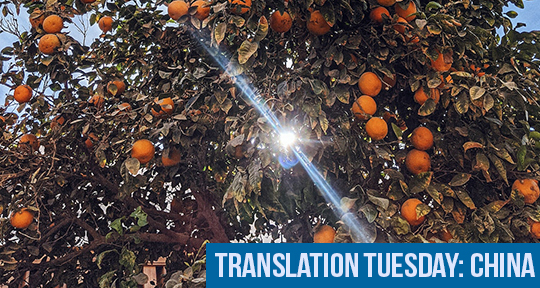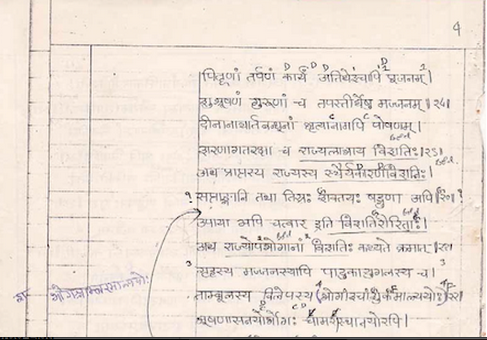Just in time for fall in the northern hemisphere, we have a special treat for nature lovers this Translation Tuesday: Yao Yao’s “Colourful Fruit Trees“ is in essence a paean to a wonder of nature and the conduit through which the warmth of the sun reaches into the sometime troubled lives of its myriad characters—some friends of the author in real life, others fictional. This is a living, breathing tapestry that is more than the sum of its parts. Thanks to translator Samuel Liangxing Luo, this marvel of a creative nonfiction that uses the list so well is now accessible to English readers.
University teacher Frances Mayes, who had left San Francisco for a vacation in Tuscany, discovered a fascinating old house named “Yearning For The Sun.” There were hazel trees in front of the steps, fig trees by the well, and, on the surrounding hillside, 20 plum trees, 117 olive trees, along with countless other apricot, apple, and pear trees. These fruit trees were strikingly colourful and the scenery magnificent. Enchanted, she dug deep into her savings and put everything on the line to buy the house. Flooded with sunshine, her days there were brilliant and happy.
Cao Jie, who came to the city of Fuzhou to teach animation, connected frame-by-frame the images of the sky above the university city and the trees along the Minjiang River to create a Fuzhou version of Laputa: Castle in the Sky. The farm-style lychee and longan trees planted in the past were kept at the new campus. Every time she proctored for final examinations and looked out of the windows, she would see fresh lychee fruits shining in red on the branches, where two or three boys would be climbing and passing the fruits on to beautiful girls.
Cao Jie climbed all kinds of trees in her hometown of Chuandong. As a child, she fell from a red pomelo tree and pierced her eyelid on coal debris on the ground. There was a big yellow fig tree near the dormitory building at her middle school campus. Sometimes, she climbed up the tree and stayed alone quietly or had a nap there. Other times, she and three or four other classmates would sit and chat on branches more than ten metres high, just like the aliens living in the Hometree in Avatar. Cao Jie painted the best gouache for many trees. She was familiar with painting the details of the yellow fig tree, the winding branches, the tender yellow bud tips, and the little red fleshy fruits. There was also a big yellow fig tree at the university campus. Disguised by the fig tree, students turned over the wall, merged into the night, and played outside. READ MORE…


